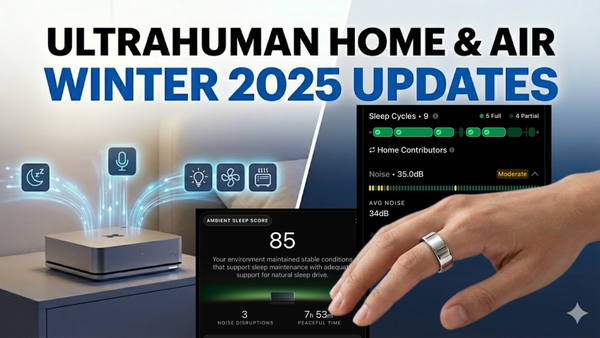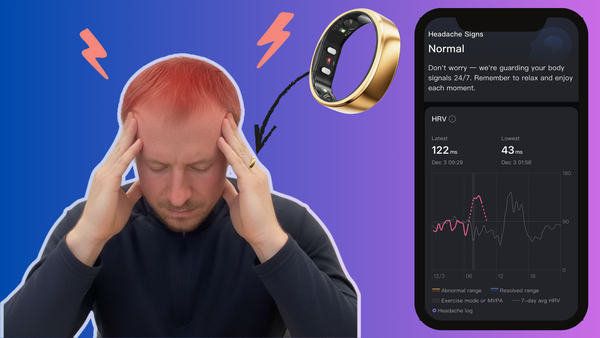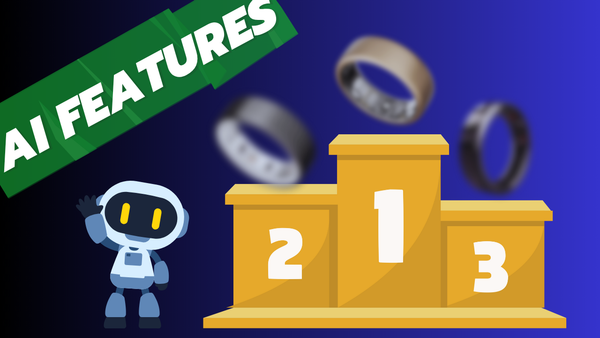⏰ Garmin finally wakes you up smartly! Does it work?
Garmin Fenix 8 finally brings smart wake-up! I compare the new Smart Wake feature with the Oura ring, EEG, and older Garmin models. Does it really help reduce sleep inertia? I also revisit a 2018 email where I dreamed of this very feature.
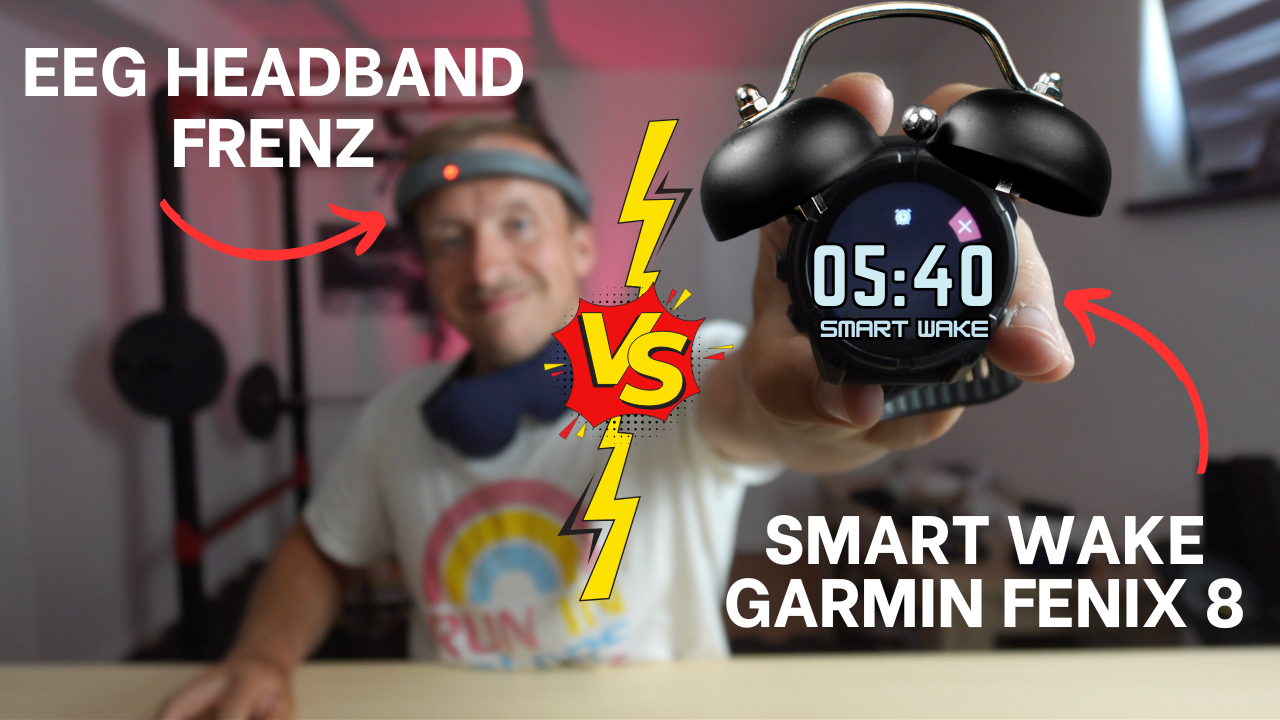
I found an email from 2018 where I discussed with the developer of the “Sleep as Android” app the potential for integrating their smart alarm feature with the Garmin Fenix 5.
A lot has changed since then—Garmin has released around a thousand different watch models, and now I’m wearing the Garmin Fenix 8 with a smart alarm!
In this article, we’ll look at:
- who the Smart Wake alarm is for,
- how it works,
- the wearables context,
- and whether it actually delivers smart wake.
Let’s dive in. 💥
💍 Support the Lord (and his Smart Rings)
This site runs on coffee, curiosity, and the late-night hours of a dad of three. If you’ve found something helpful here, feel free to drop a tip — it helps keep this little kingdom alive.
Every coin is my preciousss 💰
All Garmins are equal 🐷
… but some are more equal than others. The first surprising device to feature Smart Wake was the Vivoactive 6.
Now, thanks to a massive beta program update, it’s finally reaching the Fenix 8, Fenix E, and Tactix 8. That said, unless you’re ready to deal with more bugs than usual, you might want to wait a bit longer for a smoother smart alarm experience on these models.

How does the alarm work?
On the frontend, it’s surprisingly simple. Just go to:
Clock ▶️ Alarms ▶️ Specific Alarm ▶️ Enable “Smart Wake”
That’s it. No extra setup needed.
The smart wake alarm creates a 30-minute window to attempt to wake you with optimal timing based on your sleep. For example, if you set your alarm for 8:00 am, the alarm may gently alert you to wake up some time between 7:30 and 8:00 am. You can choose to make any alarm a smart wake alarm.
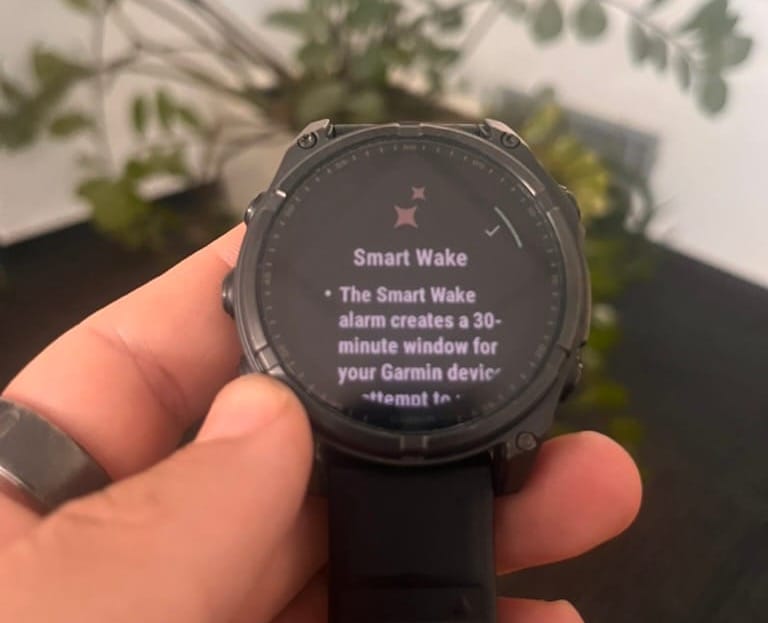
The Context of Smart Wake in Wearables
Waking up during a light sleep phase is the holy grail of alarms—your best defense against sleep inertia. Sleep inertia is that groggy, confused state that can last from a few minutes to several hours after waking.
Different wearable manufacturers take different approaches to smart wake-up features. For example:
- 🤕 Smart Headbands – These use EEG to read brain signals and trigger sound-based alarms. Personally, the Dreem 2 headband gave me the best mood upon waking. I was less satisfied with the Frenz headband.
- 💍 Smart Rings – French company Circular had potential, waking users with vibrations during presumed light sleep, but it’s fading. Ultrahuman is also trying to score points for smart waking, but lacks any active component (like haptics or sound), relying solely on the phone to wake you.

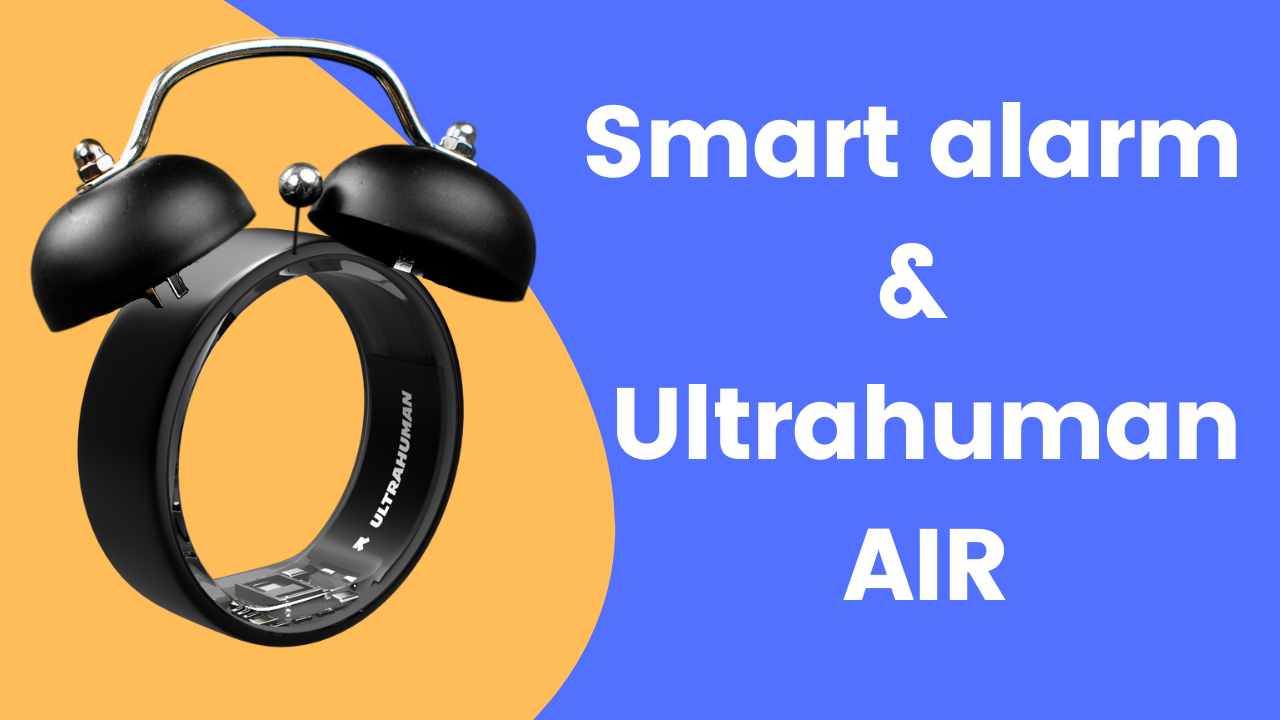
- ⌚ Smartwatches – Like Garmin, Fitbit attempts smart wake-ups within a 30-minute window. With Apple Watch, you’ll need a third-party app to get similar functionality.
- 🩹 Others – Whoop, for instance, approaches smart waking based on “green” recovery readiness, using vibrations to wake you gently.
⏰ Does it work?
Good question—and a tough one to answer. After the first two nights, I didn’t feel a major difference. But that doesn’t mean it’s not working. With the warmer mornings, I’ve been waking up more frequently on my own, so there’s no standout moment—yet. And that’s actually a good sign.
Let’s look at some hard data:
- Today’s alarm was set for 5:30–6:00.
- The watch vibrated at 5:40. Unfortunately, Garmin doesn’t offer much post-alarm analysis or logging, so you can’t dig deeper afterward.
- According to Garmin’s sleep graph, I was in light sleep at 5:39, and already marked as “awake” at 5:40.
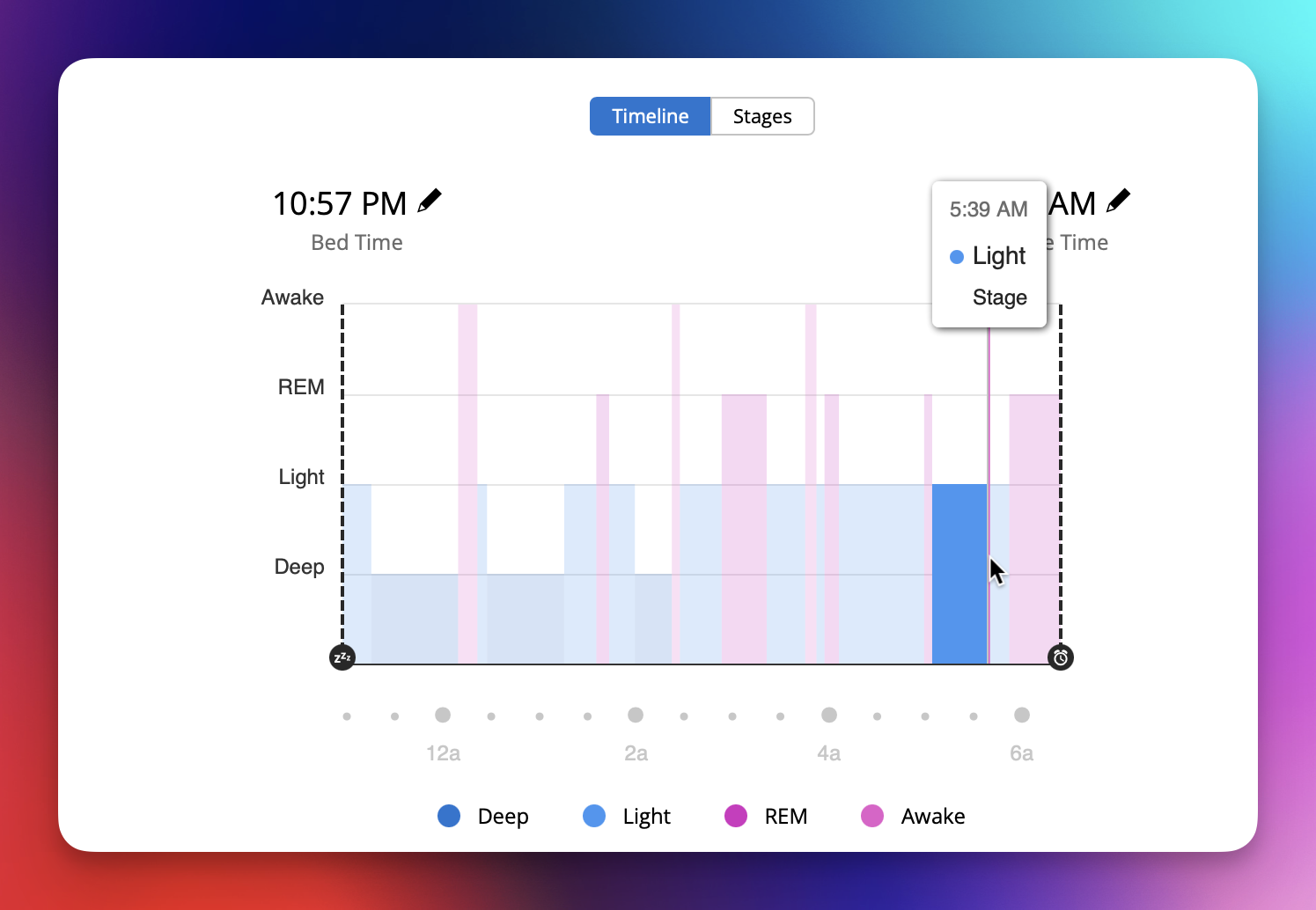
- According to the Oura ring—which, by the way, came out on top in my sleep tracking comparison—it was almost perfectly aligned:
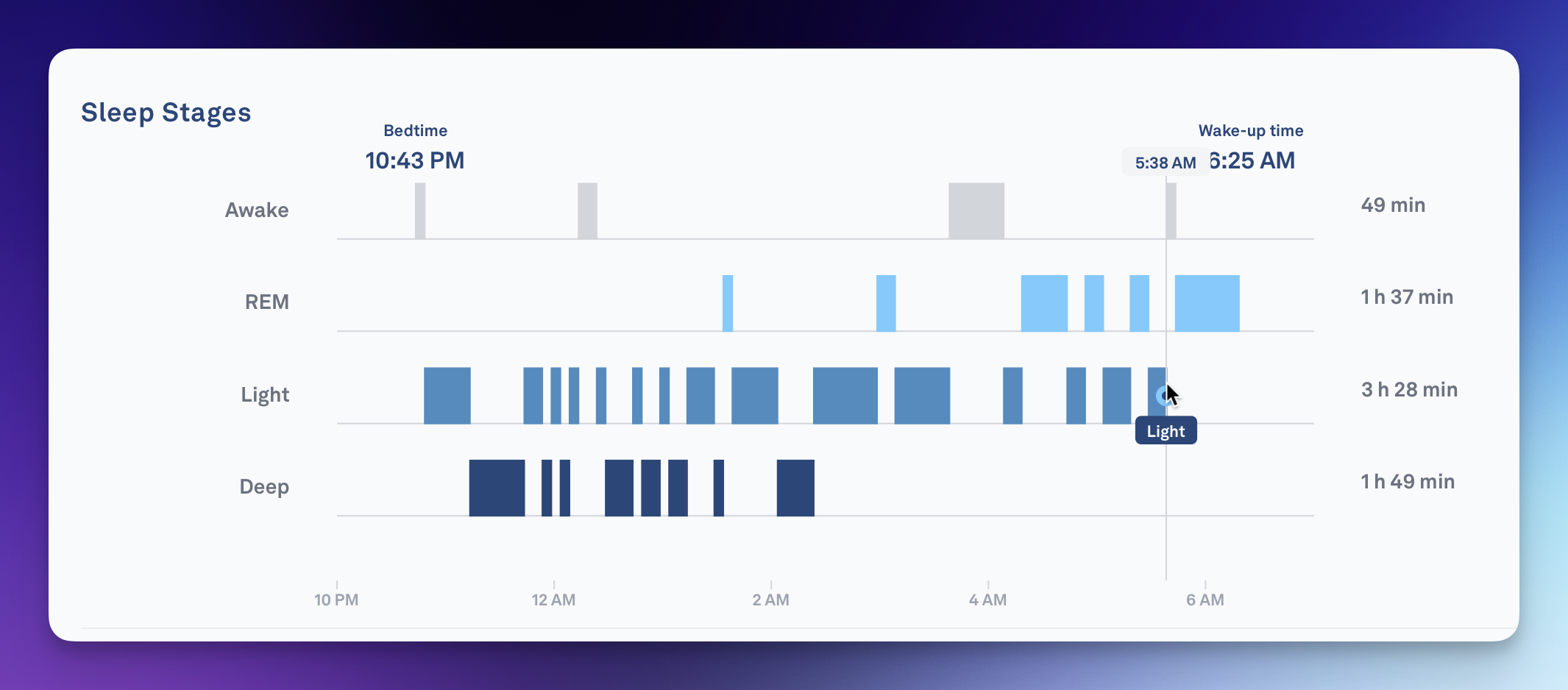
- And if we stop guessing sleep stages and look at actual brainwave data through EEG with the Frenz headband, the results are strikingly similar:
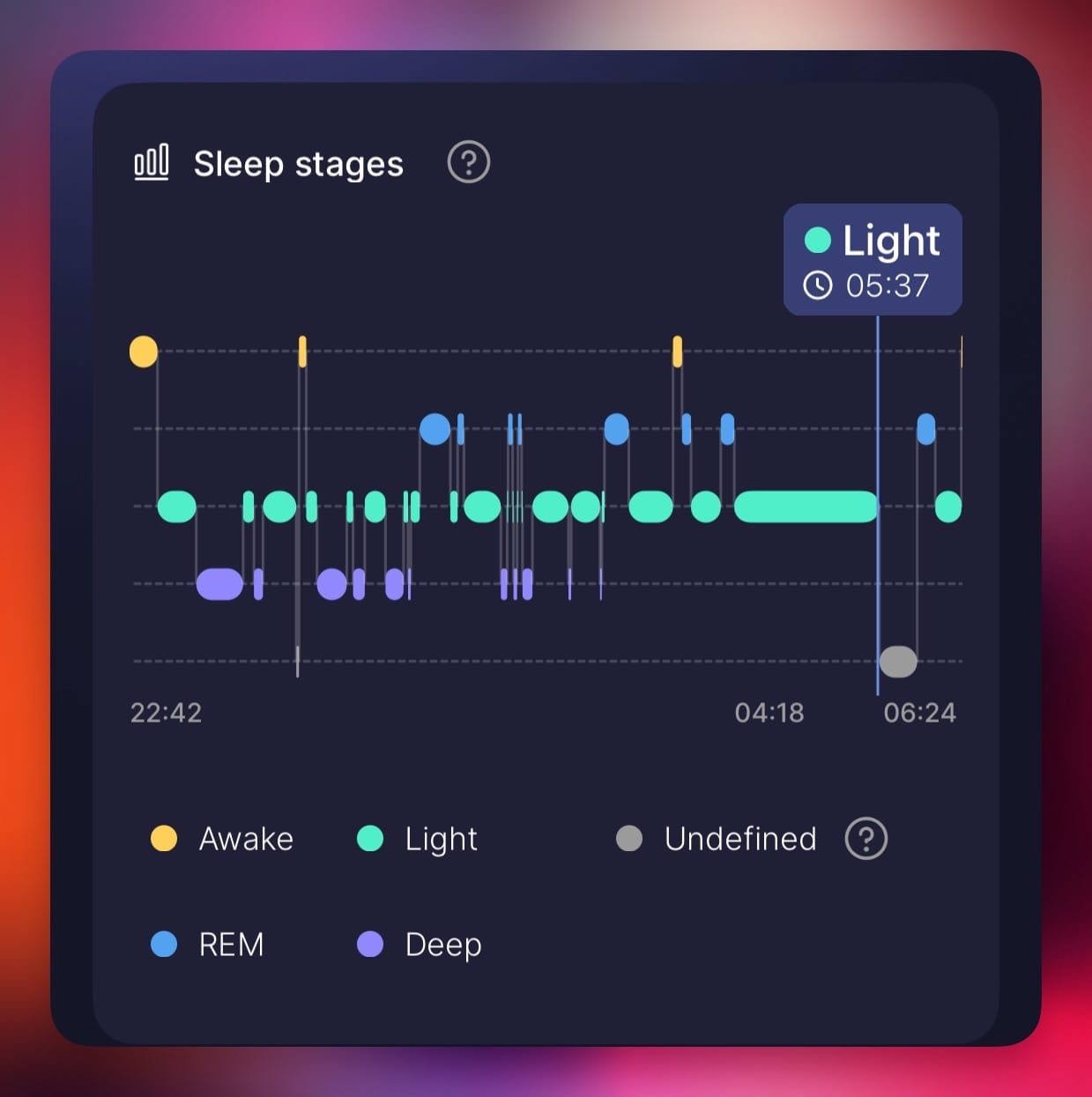
In Conclusion
There are two main things I have to say to wrap this up:
- First, I truly don’t understand why it took Garmin so long to develop this feature. Maybe if they hadn’t been so focused on churning out new hardware models and instead invested in deeper software optimization, we could’ve had Smart Wake years ago. But hey, releasing endless variations, segmenting the market, and fueling that hardware-driven cash flow seems to be the Garmin way…
- Second, the 30-minute window feels like a compromise. Personally, I’d love the option to customize that window. Then again, a 60-minute window could mean waking up a full hour earlier than necessary—not ideal. Still, 30 minutes is a lot better than zero. Until now, Garmin alarms have gone off at static times, regardless of your sleep stage.
I’m a big fan of natural waking, but any attempt at a smart alarm is better than none.




